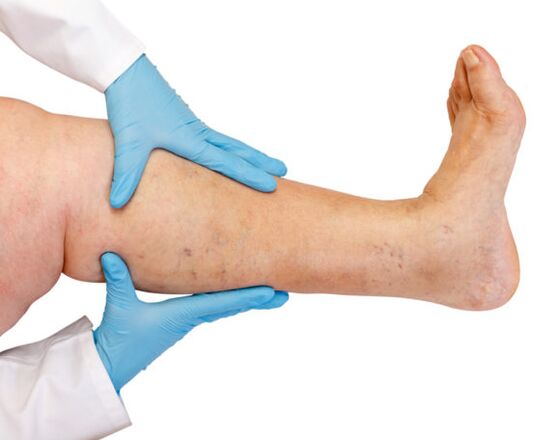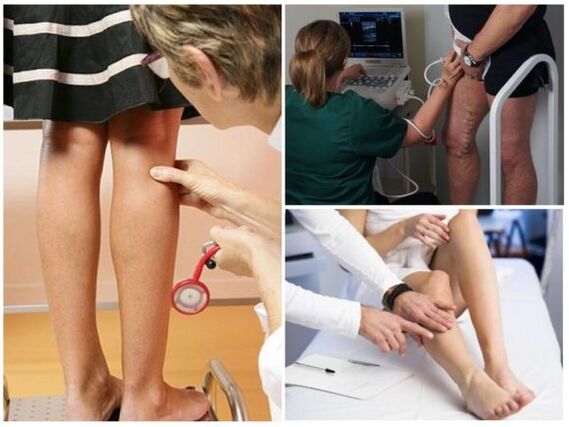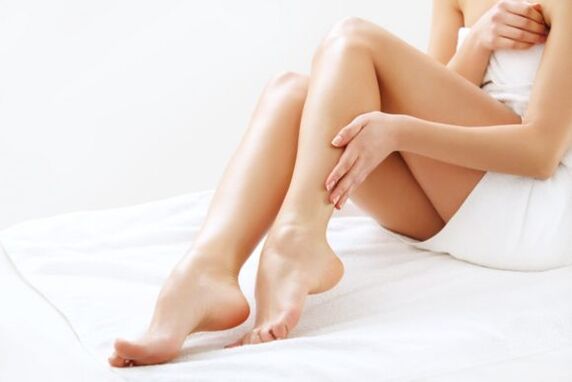As you read the article, then you are facing a problem like varicose veins.Internal varicose veins is a common, known disease for both men and women.The article below discusses the manifestations of the disease, diagnostic methods and information on how to cure internal varicose veins on the feet.

Symptoms
In the health condition, the veins on the legs are practically not visible, they are hidden under the skin and function normally without creating problems for a person.But with disease such as internal varicose veins of the legs, you can observe an extended venous network with nodes and in advanced cases with trophic ulcers.
Varicose is not only a cosmetic defect, but also a very dangerous disease that must be detected in the early stages and consult a phlebologist.Varicose of the veins on the limbs occurs due to blood stagnation with impaired venous valves, which helps the blood rise to the heart and not lower.
Symptoms of deep veins to pay attention to:
- pigmentation, dryness, burning of the lower limbs;
- swelling and heaviness for or at the end of the day;
- lower limb pain;
- The appearance of an extended venous grille on the legs.

At the beginning of the disease, it is easy to win, but advanced cases are fraught with complications.
The internal varicose veins of the legs can provoke the appearance of trophic ulcers that bleed and heal for a long time, and the most dangerous consequence of pathology is the formation of blood clots.
A thrombus can be detached at any time and clog important vessels, which can lead to death.Therefore, there is no need to ignore such a minor, seemingly illness.
Varicose veins of the legs have a genetic predisposition.If the closest relatives have such a condition, be careful and take preventative measures.
Reasons
The reasons for the appearance of a vascular network may be:
- excessive leg load;
- obesity;
- hormonal therapy;
- Pregnancy or menopause;
- uncomfortable shoes;
- Long stay of the legs (standing or sitting work and lifestyle).
The internal enlargement of the veins of the lower limbs is clearly depicted in the photo.
Stages of course
The stages of disease development are as follows:
- Stage 1: One practically does not pay attention to his condition, sometimes he hesitates after a long walk or serious exercise.
- Stage 2: By this time the patient has already begun to swell, the pain intensifies, a varicosebite network appears, night spasms are possible.
- Stage 3: The condition is exacerbated, the swelling of the legs is improved, pigmentation occurs, the veins widen even more and darken and their node can be seen.
- Stage 4: There is an increase in body temperature and the integrity of the skin is impaired trophic ulcers.This is the most difficult and dangerous stage.But most often, it is in this condition that people turn to the doctor, ignoring their previous countries.
How is the diagnosis of varicose veins?
Initially, a doctor is performed by the doctor, which evaluates the color and condition of the skin, the presence of swelling and visualization of the venous enlargement of the legs is checked.
This is followed by one of the following studies:

- The gold standard of diagnostics is the method of duplex synography.A modern ultrasound method that provides detailed information on the condition of deep and surface vessels.It only takes 20 minutes.No special patient preparation is required.The diagnosis is carried out in the ultrasound cube.
- Doppler.The method makes it possible to evaluate the nature of the blood flow, the condition of the valves of perforated and deep veins, their ability to cross side, the presence of blood clots.
- Phlebography refers to X -Ray diagnostic methods.A good way to confirm the diagnosis, but requires the introduction of contrast matter in Vienna, after which X -ray is taken.
In the photo, the doctor estimates the progress and cross price of the lumen and also determines the presence of blood clots.
BUY (bandage) samples were used earlier, but with modern technical capabilities they rarely use them.
What methods of treatment and prevention are effective?
Varicose of the deep veins of the lower limbs can and should be treated in a timely manner!Do not be afraid and do not hesitate to contact a phlebologist with such a problem.In the early stages of the disease you can get rid of easily and painlessly.
Initially, it is worth excluding those factors that can provoke the disease:
- physical activity;
- irregular shoes;
- Excess weight;
- Bad hormonal background.
But not all causes can be corrected, such as pregnancy or heredity.In such cases, you should recall prevention.
The good preventive method will be a moderate physical exertion (cowardly running, walking with elevators, swimming, cycling).But at the same time, be sure to wear bedding.
You should avoid overheating the body so that you turn off baths, saunas and tan.
Such small errors during working hours as throwing your feet on your feet, prolonged standing or sitting will adversely affect the health of your veins, so follow your activity.
Exit the workplace every half hour and hit, in case of long position, replace the supporting leg.Arriving at home, lie on the bed and lift your legs up - so your limbs will rest, the swelling will decrease.
Special exercises
Patients with varicose veins can exercise for academics to clean the blood vessels.
The patient should stand on socks, lifting the heels 1 cm from the floor and then dramatically landed on the heels.You can repeat the exercise 30-50 (not more than 60!) Times 3-5 approaches a day.The tempo is slow, but with a sharp landing.With a strong shock, the muscles of the heel are tense and pushed the blood to the heart.
The internal varicose veins of the legs are treated with medical and surgical methods.

Drug therapy
Treatment with drugs will allow to overcome the disease in the early stages and prevent complications.
Medicines are prescribed for:
- increase in venous tone;
- Improvement of lymphatic drainage function (reduce stagnant phenomena);
- improving tissue nutrition;
- Stop secondary inflammatory reactions.
All medicines should only be taken as prescribed by a specialist!Do not self -evaluate yourself so that you do not worsen your health.
Surgical treatment
The surgical method is used in advanced conditions.It consists in the removal of enlarged subcutaneous veins and insolvent perfume.This is a more radical method of treatment.There are still methods such as undressing and ligating.They also refer to surgical, but are performed on an outpatient basis.
The refusal is the removal of a varicose vein with the help of a small probe.At the beginning and at the end of the vessel, two small cuts are performed, an instrument is started in it and fixed at the outlet, then the probe along with Vienna is eliminated.
Advantages of this method: small cosmetic defects, rapid recovery period, small pain after intervention.
Location - varicose veins, is practiced more as an additional method of undressing or radical removal.

Miniflebectomy is an operative intervention with minimal access: a special hook is introduced through the incision, it pulls the vein out where it is bandaged and cut.
What method of treatment you can resort in your case - only a specialist decides.
What does traditional medicine offer?
In folk medicine, freshly drained carrot juices, spinach leaves, beets, celery and parsley turned out to be good.
You should drink 500 ml daily.And special attention is paid to the drinking regimen, since the blood plasma consists of water and other trace elements.With the lack of fluid, the blood thickens.The water rate for humans: 40 ml per 1 kg weight.
The internal enlargement of the veins of the lower limbs is a serious but cured disease.Listen to your body, with the smallest disorders, see a doctor!












































